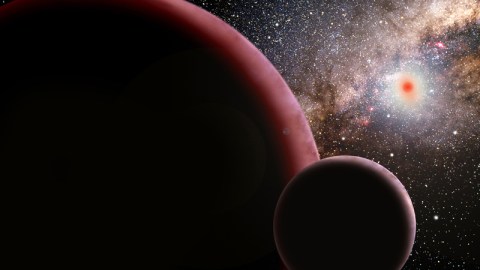And This Planet Is Just Right

As we speak, NASA’s Kepler Mission is trailing the Earth in an orbit around the sun, spying into deep space and trying to find new planets in the “Goldilocks Zone”—just the right distance from their stars to sustain life, theoretically. But while Kepler out in space and other instruments here on Earth try to find more and more new worlds, scientists are discovering more about what make an exoplanet a good candidate for life: size counts.
Yes, it seems our little flying rock of a homeworld, with its diameter of about 8,000 miles, is just the right size to support life. And larger planets—even at the same distance from the sun—might not be so successful. That’s because super-Earths aren’t as good at supporting plate tectonics and magnetic fields, according to German scientists presenting their ideas at the European Planetary Science Congress this month.
Plate tectonics not only provides the positions of the continents and thrusts up the world’s mighty mountain ranges; it also causes chemical reactions that can pull carbon dioxide out of the atmosphere and help to stabilize the surface temperature. Convection from inside the Earth drives its tectonics, but the German team argues that an insulating layer inside super-Earths would prevent their heat from doing the same.
And life as we know it also needs its home planet to have a strong magnetic field, repelling the damaging cosmic rays hurtling across the heavens. The science is a little more vague on this, New Scientist says, but it appears that Earth-sized planets have an advantage here, too, over their larger counterparts.
Unfortunately, if the researchers are correct, that cuts down on the number of possible planets out there that are good candidates for life. But there are just so many worlds in the universe that plenty of them will fit even the strictest criteria.




